Ketamine
(Vitamin K, Horse Trank, Special K)
TrippyWiki score: 5.6/10
TABLE OF CONTENTS
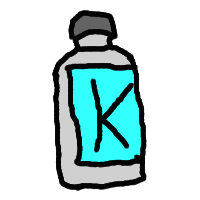
What is ketamine?
Ketamine is the most popular dissociative on the planet. Even though this substance is commonly taken as a club drug, ketamine is now mainly being used for treating depression. Lately, this drug has been approved by the FDA for use in a medical setting because of its effectiveness.
Long-term benefits & side effects
Many of the benefits will only occur if you take this substance the right way.
Ketamine…
How to take ketamine
Administration
You can either take the substance intramuscularly, intravenously, orally, or snort it.
Snorting the drug can block your nostrils and make your eyes watery. If you are going to snort the drug, use a saline nasal spray to soften the load on your nasal cavities.
Muscle injection is the most common route of administration for users who take ketamine recreationally. If you use this method, the drug will kick in faster. One downside of this method is that you may experience muscle pain.
In a therapeutic setting, ketamine is given intravenously.
The drug can be swallowed but the taste is unpleasant and you would need to take a much higher dose.
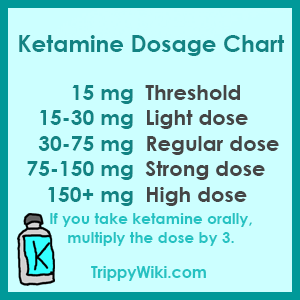
Dosage
Intramuscular / Intravenous / Insuffated
Oral
For treating depression, doses of 0.5-1 mg/kg (intravenous) are far more effective than lower doses.
That is why in most ketamine therapy clinics, you will first be given a dose of around 0.5 mg and gradually build your way up.
Doses higher than 150+ mg are likely to take you into the K-hole, more on which later.
Never start with a high dose. You may be more sensitive to the substance than others and it might cause you irreversible damage if you don’t take it responsibly.
Those who need less of the substance to reach desired effects include older and extremely lean people.
Safety checklist
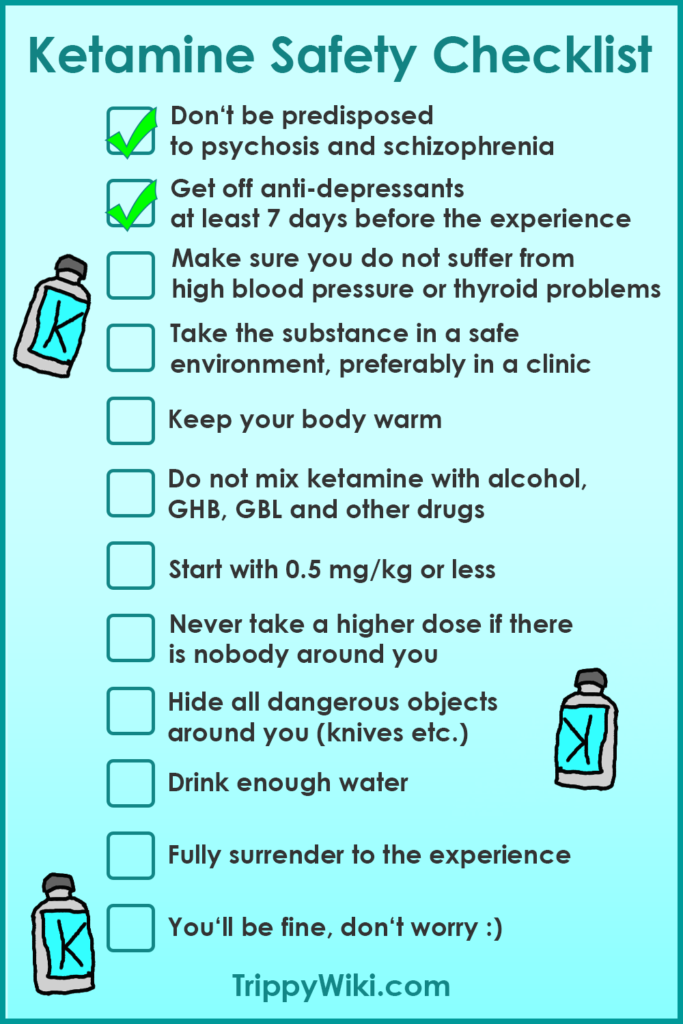
Maximize the benefits
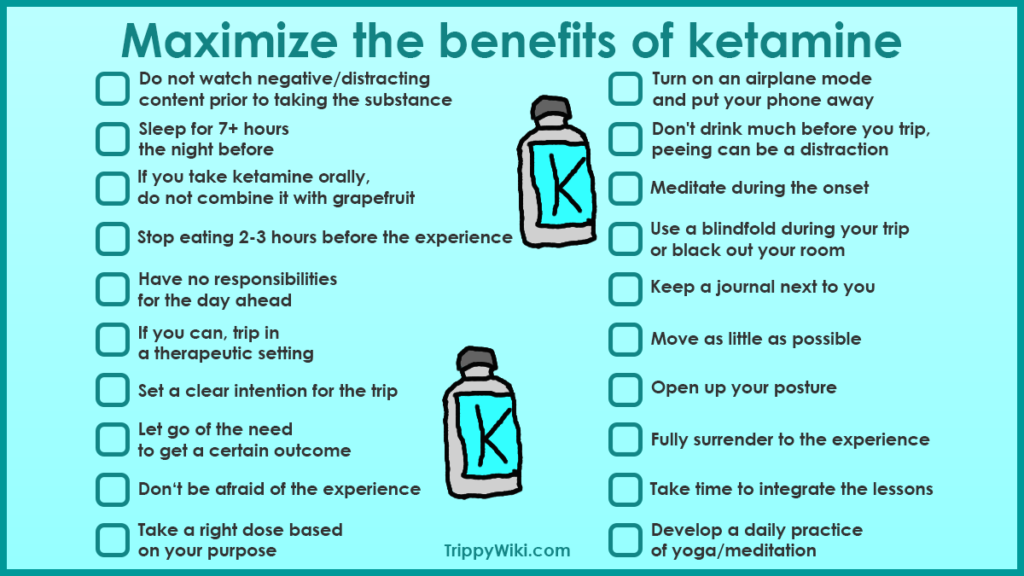
Keep in mind that integration is even more important than the trip itself. Taking the drug would be almost useless if you didn’t retain any lessons in your day-to-day life.
What will help you the most is contemplating about the experience – be it by journaling, thinking about the trip, or sharing your memories with a trusted friend.
Distracting thoughts can get in the way, which is why you want to spend the day after your trip without TV, social media, and other distractions.
If you can, spend time in silence and solitude. Meditate, go for a walk, contemplate the experience.
Duration
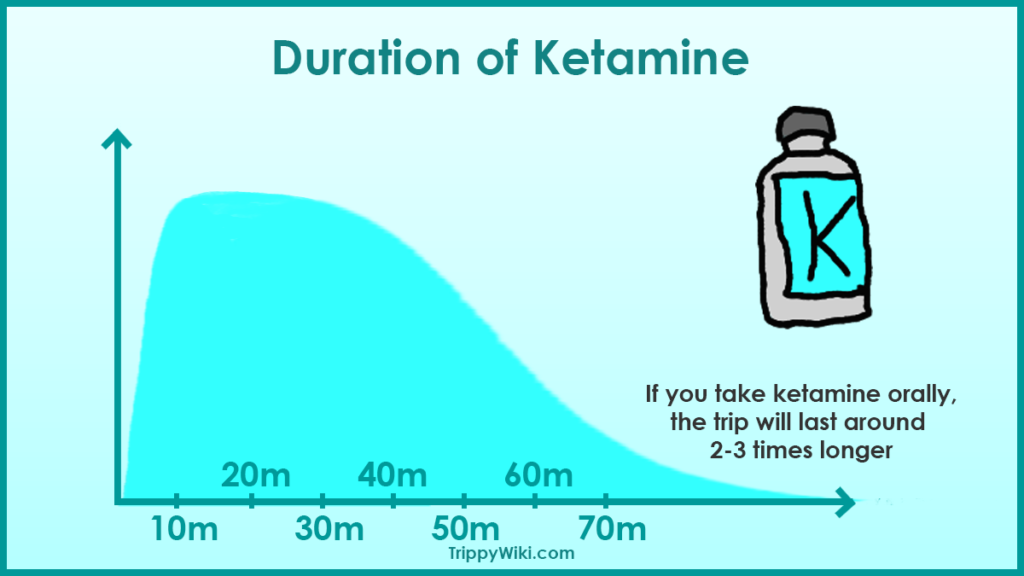
Onset = 2-5 minutes
Come up = 5-10 minutes
Peak = 30-60 minutes
Come down = 2-12 hours
What does ketamine feel like?
There are 4 main types of experience you may go through:
1) Empathogenic experience (feelings of comfort, relaxation, empathy, compassion, love awareness)
2) Out-of-body experience (a complete separation from your body, talking to entities, reliving certain parts of your life)
3) Near-death experience (ego-dissolution, reliving your life; this experience may feel like psychological and even physical death)
4) Transcendental experience (realizing oneness, God, transcending your ego, space, and time)
The transcendental experience is often described as K-hole and typically happens at higher doses. You will not be conscious of your body if you enter this state so never take a high dose in an unsafe environment!
Other common short-term effects include:
Euphoria
Increased creativity and open-mindedness
Mindfulness, being present
Higher capability for love and compassion
Pain relief
Sedation
Memory suppression
Visual effects (weaker than those of most other psychedelics)
Confusion
Inability to talk
Increased body pressure
Worse thermoregulation
Difficulty urinating
Anxiety, paranoia
Vulnerability
The higher dose you take, the more intense these effects will be.
With that said, it is impossible to accurately describe the experience through human language.
The only way to truly know what ketamine feels like is to take it.
Compared to other psychedelics, ketamine usually feels calm and isn’t likely to cause you an unpleasant experience. Bad trips can happen but you can prevent them by following the tips below.
Bad trips
Bad trips mostly happen because people take the substance irresponsibly. If you take this psychedelic the right way, there is virtually no chance you’ll get a bad trip.
In case you still do, that’s good! A “bad” trip isn’t bad, it can actually be the most healing and insightful moment of your life!
During a “bad” trip, negative emotions are coming up from your subconscious mind. They have always been there whether you are aware of it or not. They have been damaging your life and a difficult trip is an opportunity to process these traumas and unpleasant feelings and let go of them.
The more painful the experience, the more you can heal.
So instead of calling bad trips bad, call them challenging.
If you understand that bad trips are awesome in the long-run, not only will you feel more comfortable diving into these challenging states, it will actually excite you!
Why they happen
The most common reasons for getting a bad trip are:
How to cope with a bad trip
How to end a bad trip
In case you are not ready to face your inner demons yet, there are a few ways to end a bad trip.
One possible way is to put on music that is familiar to you. Another way is to switch up your location and move from one place to another. This can completely change your train of thought.
Interactions
History
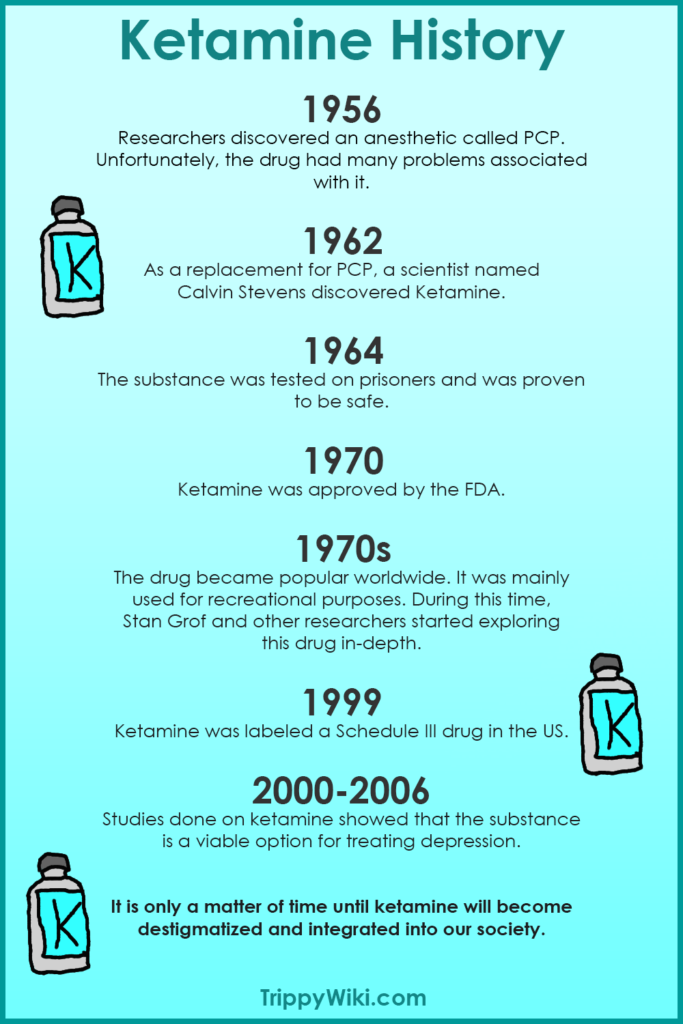
Legality
As of 2021, there is no country where you can legally buy ketamine without a prescription. The only way to take the drug legally is in a licensed clinical setting.
In many countries, you can legally own a small amount of the substance for personal use.
Where to get ketamine
These are the ways you can get your hands on the psychedelic, ranked from the safest to the least safe:
FAQ
You may also like:
Thank you for taking psychedelics responsibly, immature psychonauts are the last thing the psychedelic movement needs.
And thank you for being a part of this renaissance. Together, we can change the world!
